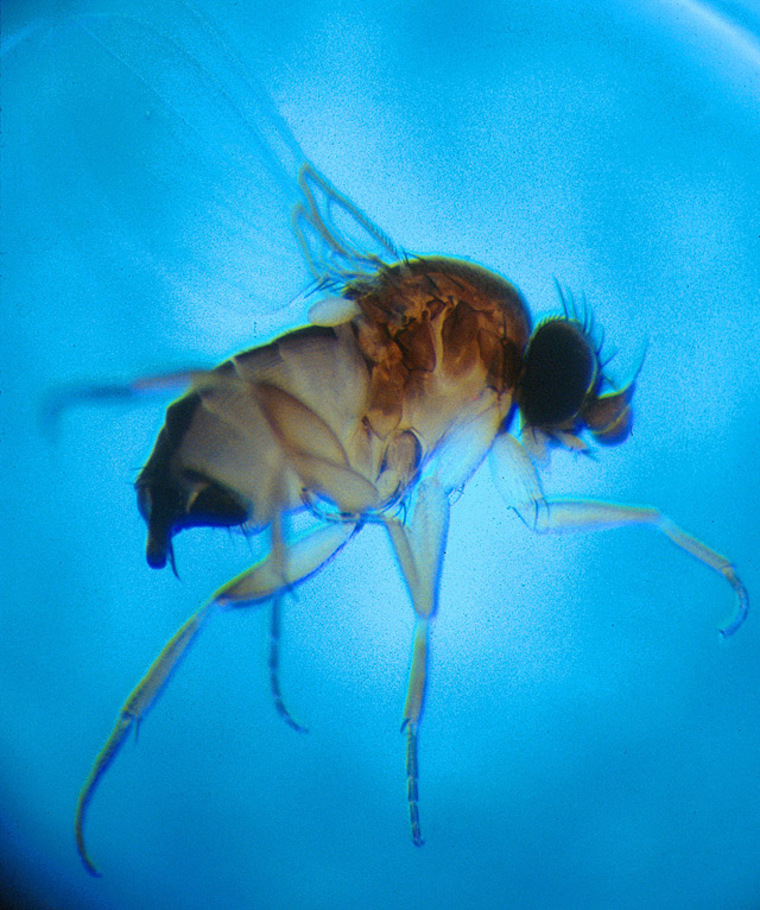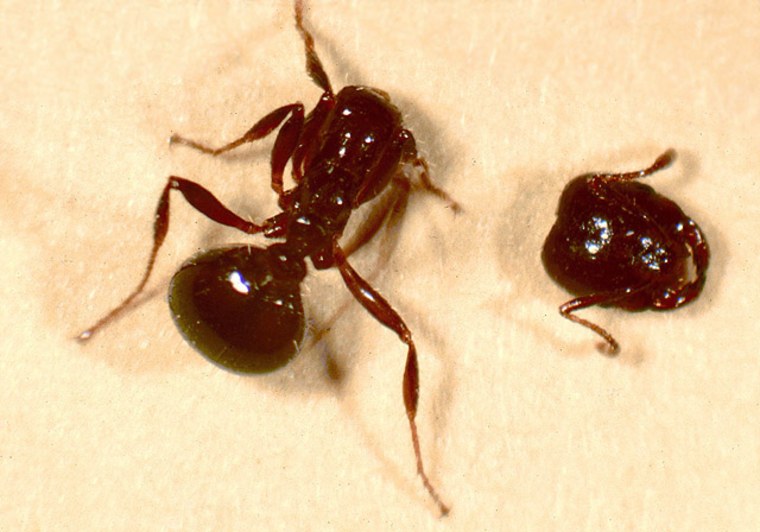Researchers are trying an unusual approach to combat fire ants — deploying parasitic flies that turn the pesky and economically costly invasive insects into zombies whose heads fall off.
The biting, territorial fire ants cost the Texas economy about $1 billion annually by damaging electrical equipment, according to a Texas A&M study. They can also threaten young calves.
For decades, researchers have experimented with the tiny phorid fly, native to a region of South America where the fire ants originated.
Researchers have learned that fire ants in their home region are kept under control by as many as 23 phorid species.
Scott Ludwig, an integrated pest management specialist with Texas A&M's AgriLife Extension Service, recently released a species of phorid fly that goes after fire ants outside their mounds. Previous species tested were only attracted to the mounds themselves.
One smart fly
"The parasite does this so it can complete development without being detected and attacked by the fire ant colony," Ludwig said. "By making their hosts wander away, the parasite is ensuring its survival."

The flies lay eggs on the fire ants, and the eggs hatch into maggots inside the ant and eat away at the pest's tiny brain.
The ant will get up and wander for about two weeks while the maggot feeds, said Rob Plowes, a research associate at the University of Texas at Austin.
"There is no brain left in the ant, and the ant just starts wandering aimlessly," he said.
About a month after the egg is laid, the ant's head falls off — and a new fly emerges ready to attack another fire ant.
"They're not going to completely wipe out the fire ant, but it's a way to control their population," said Ludwig.
Native ants are not attacked
Four phorid species have been introduced in the state since 1999. They don't attack native ants or other species and have been introduced in other Gulf Coast states, Plowes told the Fort Worth Star-Telegram.
But it will take time to determine if the flies are effective in Texas, perhaps as long as a decade.
"It's not an immediate silver-bullet impact," Plowes said.
